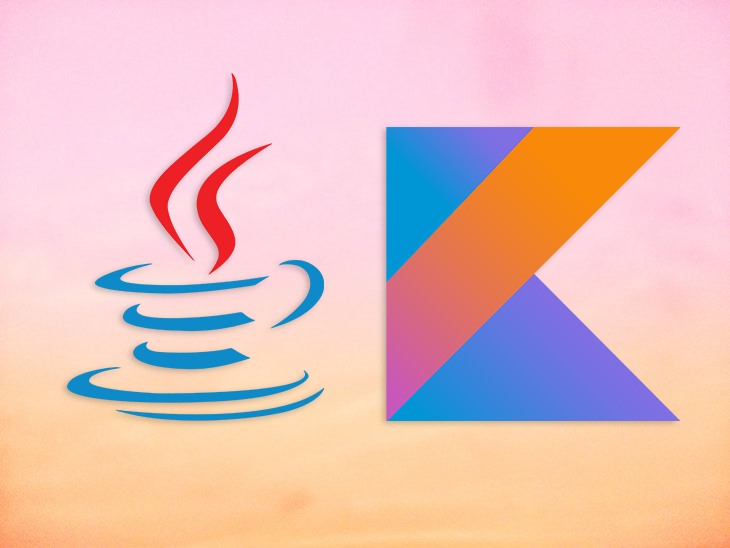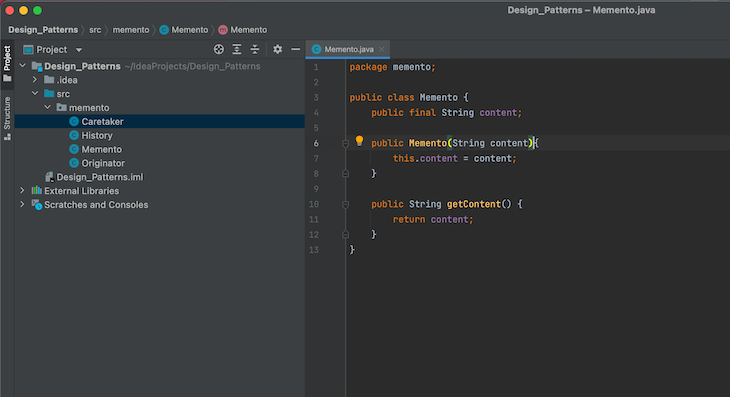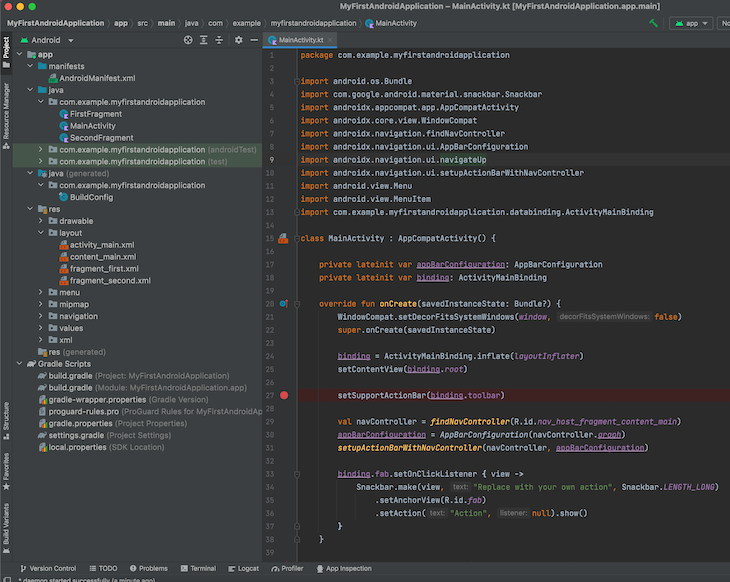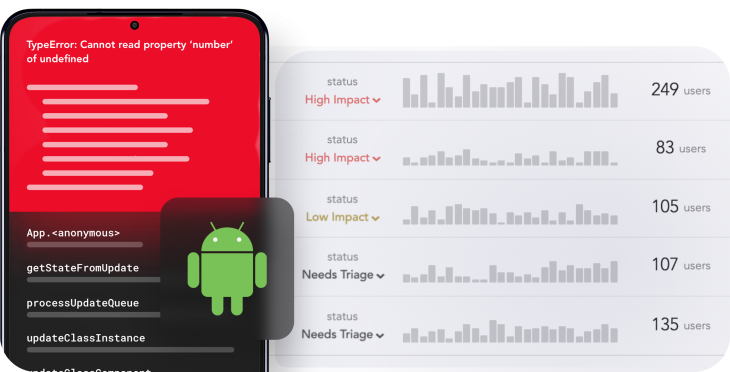
Editor’s note: This article was last updated 17 August 2022 to include additional comparisons between Kotlin and Java.

Android applications have become an integral part of our daily lives; for example, many businesses use Android applications to communicate with their customers. However, selecting the best programming language for Android development can be a herculean task.
Until Kotlin made its majestic entry, developers were comfortable with Java. Now, anyone entering the world of Android development faces a dilemma: should I use Kotlin or Java?
In this article, I’ll compare Kotlin and Java to help you make an informed decision. We’ll cover the following points:
The Replay is a weekly newsletter for dev and engineering leaders.
Delivered once a week, it's your curated guide to the most important conversations around frontend dev, emerging AI tools, and the state of modern software.
Java is a simple, powerful, and robust object-oriented programming language that is suited for many purposes, like building and managing Android apps, web apps, server apps, embedded systems, big data, and more. Java was released in 1995 by Sun Microsystems, which is now a property of Oracle, and most of its features are available in open source.

The Java language was formerly known as Oak, named by the founder James Gosling after an oak tree that stood outside his office.
Java is best suited for creating Android apps since it is platform-independent, and as a result, Java apps work on any platform. Java has its own runtime environment, Java Runtime Environment, as well as an API. A major portion of Android apps are based on Java, which is one of the most popular languages on GitHub.
Java is a dynamic language, which makes it possible for developers to modify the program structure while it is running. Java offers many security features in addition to frameworks like Spring and Spring Boot, which is also known as Spring Security.
As a multi-threaded language, Java includes a built-in garbage collector and supports memory management, unlike other languages like C++. Because it is network-centric, Java facilitates distributed computing, and it supports checked exceptions that are caught as they occur.
Java is renowned for its WORA feature, meaning “write once run anywhere”. With this portability, you can use Java on any platform. Java creates static members once that can be shared by all instances of the class.
Originally intending to make coding in Java more productive, a team from JetBrains introduced Kotlin in 2017. Shortly thereafter in 2018, Kotlin became its own official programming language. With support from Google, Kotlin was introduced as an alternative to Java for mobile development.
Kotlin is a statically typed programming language that can be compiled into JavaScript and can run on both browsers and a Java virtual machine (JVM). An Android developer can code in Kotlin or Kotlin Native and use an IDE to build cross-platform apps.

The Kotlin programming language combines object-oriented programming and functional programming in an unrestricted manner. With this feature, Kotlin is powerful and a good option for both Android and server-side applications.
Tech giants like Netflix, Trello, Uber, Twitter, and Pinterest use Kotlin to create their Android apps, and others are planning the migration.
Kotlin is a concise language that helps developers reduce lengthy lines of code. As a null safe language, Kotlin handles NullPointerException and null references using its safe call operator ?.. Kotlin can be compiled quickly and supports both primary and secondary constructors.
Kotlin has an interoperable language feature that makes it possible to call Java code. It can also create external declarations for Java Script libraries, utilizing the full power of the Kotlin type system.
Kotlin is a tool-friendly language since it can be written and converted from Java using IntelliJ, NetBeans, Eclipse, and other IDEs. Finally, Kotlin has a smart cast feature, which reduces the application’s cost and enhances its speed and performance.
Kotlin and Java provide almost the same speed for coding.
Java has more coding processes than Kotlin, therefore, a developer can spend less time thinking of a solution. However, Kotlin has more laconic constructions, which allow a developer to type less code.
Finding a solution to a task in Kotlin requires more time than with Java, meaning that the language has a higher cognitive load. For an abstract thinker, Kotlin is the ideal choice.
Because the difference in coding speed between these languages is not sizable, the verdict for Kotlin vs. Java on coding speed is a draw.
Both Kotlin and Java compile to ByteCode, which runs on JVM, so it’s difficult to compare them in terms of memory usage. Therefore, measuring, tracking, and comparing their performance is hard.
With its extra features, Kotlin is more functional than Java. In addition, due to Kotlin’s Coroutines tool, it’s also easier to work with multi-threaded apps. However, Kotlin compiles and executes a little slower than Java, which is mainly due to its extensive number of features.
On the other hand, Java is simple and has fewer extra features than Kotlin, thereby compiling faster. Because the difference is only slight, the battle of Kotlin vs. Java based on performance is also a draw.
In terms of stability, we can see a significant difference between Java and Kotlin.
Java has been in the development scenario for quite a long time. There is long-term support for versions like Java 8 and Java 11, meaning that if anything goes wrong with these versions, developers can fix it with a patch. A developer can download various versions of Java with a free license.
Although Kotlin is also an established language, it is still younger than Java and has no versions with long-term support at the time of writing. Although both Java and Kotlin are considered stable languages, Java can ultimately be considered more stable.
One major strength of Kotlin compared to Java is the use of the extension function, which allows a programmer to add additional functionality to a class. This is achieved by prefixing the name of the class and function.
In Kotlin, the variable specification data type is not required, while in Java, the variable data type is required. Declaring variable data type has some advantages, like easy identification of some types of error, optimizing memory, and increasing the speed of arithmetic processing. Therefore, Java wins the battle of data type.
In Kotlin, line breaks are used to format the code construct, while Java uses the semicolon to end a statement or declaration. As a result, the Kotlin coding convention is easier than the Java convention.
Easy deployment plays a crucial role in customer experience and satisfaction, facilitating the process of building, testing, and deploying new code, updates, and modules. Because Kotlin uses fewer lines of code, it’s easier to deploy and maintain a Kotlin application than Java.
The Java programming language has static members for its class, while Kotlin does not support the static keyword. Therefore, you can’t create static methods and static variables in the Kotlin programming language.
Although both Kotlin and Java provide plenty of documentation, it’s easier to find a tutorial for Java since it has been in use for a longer time. Java is often considered to be the most straightforward programming language to learn, and you can find its official documentation from Oracle.
On the other hand, although a comparatively young language, I believe Kotlin’s official documentation is sufficient to learn how to work with it, so this also ends in a draw.
According to data from Google Trends, Java peaks the interest of developers more than Kotlin. Although Java has experienced several ups and downs, the popularity of the language stays ahead of Kotlin by a long shot.
The major reasons for this include Java’s long lifespan as well as the simplicity and resources for getting started with Java.
However, Google’s efforts have helped in Kotlin’s adoption and usage, for example, catapulting Kotlin to the fourth spot for most loved programming language in the Stack Overflow 2020 developer survey.
Kotlin originated from Russia, therefore, a noteworthy percentage of Russian developers have opted for Kotlin, forming the core of the Kotlin community. Even so, the Kotlin community is around 20 times smaller than Java’s, and more developers are still inclined to using Java.
A distinct part of the developer community for Java originates from India. India has a large population of junior developers, and Java is fairly simple to learn, so many students begin learning with Java. This trend extends beyond India as well, with junior developers across the world beginning their education with Java.
According to the latest Developer Survey from StackOverflow at the time of writing, Kotlin is one of the most popular technologies, with around eight percent of professional developers choosing Kotlin. While it is ranking highly in Google Trends, Java failed to make it on the list.
Although Java is on the list of the most-loved technologies with around 44.1 percent of developers expressing interest in continuing to develop with it, Kotlin surges ahead with 62.9 percent.
Incidentally, Kotlin brings more money to developers with a revenue of $55k per year in comparison to $50k for Java. For these reasons, Kotlin wins the battle of the talent pool.
While Java and Kotlin both have ample documentation, Kotlin has a smoother learning curve. Java requires writing more code than Kotlin to resolve a task, but the programming language has been in the development scenario for a longer amount of time and has a stronger community, so a beginner can find necessary documentation and help more easily.
Kotlin, on the other hand, requires more cognitive investments in learning than Java. However, it requires less code overall, making it apt for experienced developers or visual learners. Therefore, the winner for learning curve is Kotlin.
Choosing between Kotlin and Java is hard. While both languages are similar, they are best suited for different tasks.
On one side, Java is a universal language. Primarily, Java was used for developing Android applications, but it’s become an ideal choice for big data, ecommerce, and enterprise systems. Companies like Netflix, AppleTV, Hybris, and ATG all use this technology.
On the other hand, Kotlin is a fast emerging language that provides developers with the opportunity to experiment with the latest modern programming paradigms in Android development. Therefore, Kotlin is a better choice for developing modern-day Android apps. Almost every app in the Google Play store is based on Kotlin, which serves as a base for writing microservices. Companies like Pinterest, Trello, Coursera, and Evernote use Kotlin, to name just a few.
In the end, the choice of the language depends upon the developer and the project. If you’re a beginner, consider going for Java. If you’re a cognitive thinker who prefers writing less code, Kotlin is the ideal choice. I hope you enjoyed this article, and happy coding!
LogRocket is an Android monitoring solution that helps you reproduce issues instantly, prioritize bugs, and understand performance in your Android apps.
LogRocket's Galileo AI watches sessions for you, instantly identifying and explaining user struggles with automated monitoring of your entire product experience.
LogRocket also helps you increase conversion rates and product usage by showing you exactly how users are interacting with your app. LogRocket's product analytics features surface the reasons why users don't complete a particular flow or don't adopt a new feature.

Start proactively monitoring your Android apps — try LogRocket for free.

Container queries let components respond to their own layout context instead of the viewport. This article explores how they work and where they fit alongside media queries.

React Server Components vs Islands Architecture: Learn how each reduces client JavaScript, impacts hydration and interactivity, and which trade-offs matter for production performance.

Large hosted LLMs aren’t always an option. Learn how to build agentic AI with small, local models that preserve privacy and scale.

What storylines defined 2025 in frontend development? We power rank them all, from AI advancements to supply chain attacks and framework breakthroughs.
Hey there, want to help make our blog better?
Join LogRocket’s Content Advisory Board. You’ll help inform the type of content we create and get access to exclusive meetups, social accreditation, and swag.
Sign up now